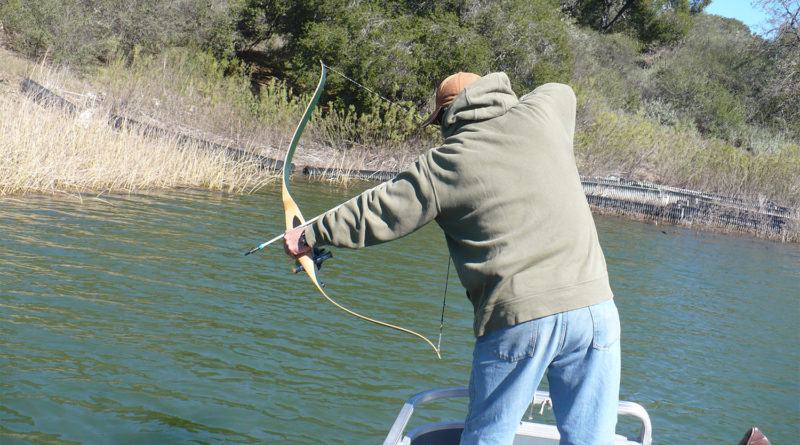Bowfishing: Growing number enjoy cruising for carp
One of the best things about bowfishing, according to Neil Harp, is what you can see in just one night’s time.
“Just last Friday, I saw multiple species of fish, including eels, and have come across turtles, ducks, raccoons, deer, frogs and much more along the banks,” he said. “Bowfishing allows you to be in the outdoors with a bow in the offseason of deer hunting.”
Bowfishing popularity has climbed in the region, as a growing number of anglers take their boats down the Susquehanna River during summer nights hoping to harvest monster carps or catfish.
“ft is a fast-paced sport, which is really appealing to the adventurers in the region,” said Judy Weaver of Weaver’s Archery in Kreamer. “You’re fishing at night, using flashlights, and when the light comes across a large carp, it will quickly try to get away. You have like 10 seconds to take the shot.”
ft gets even more exciting, she said, when you come across a large school of carp in one setting.
“You can find a bunch together, and then it is a lot of quick, repetitive shooting,” she said. “You only have a small window until they all disperse.”
Weaver’s Archery holds a series of bowfishing tournaments, usually during the months of May, June and July.
“The best times usually start later in the spring months and then into the summer when the water levels drop and the fish aren’t as active,” said Weaver.
A regular Pennsylvania fishing license is required, but equipment to get started doesn’t need to cost a whole lot, Weaver added.
“You can use a cheap yard sale bow and just add the special reel and arrows as needed,” she said. “You can get into it for under $100, but there are more expensive rigs that can range from $500-600.”
Boats aren’t a necessity, she said.
“The carp usually come close to shore where they feed, and I know people who do this from the river or creek banks,” Weaver said. “There are a lot of islands in the river, and it is nice to have a boat to get to them and fish around them, but this is a sport where you don’t need to be in the deeper, fast-moving water.”
Carp can grow quite large — the biggest so far this year at a Weaver’s Archery event was 40 pounds — and can be eaten, although they don’t offer a lot of quality meat.
“They’re a scavenger fish,” Weaver said. “We have a farmer that composts them, saying they’re great fertilizer.”
Harp admitted he never lets any of his carp go to waste.
“1 provide them to trappers who use them in their baits, dog food facilities take them and people use them for fertilizer — and some eat them,” he said. “I love that more people are getting into this, but I’m a little leery of people going out and shooting as many as they want, if it was me, I’d put some sort of limit on it like hunting for squirrels or rabbits.”
Weaver has seen a variety of people coming in for bowfishing supplies lately.
“There are always new people getting into it, and they come in looking for new set-ups,” she said. “This is a sport where people don’t really upgrade a lot. You’re using the bows in the water, and they’re not kept in the nicest conditions. People do come in for new arrows — they continually dull their points.”
For more information about Weaver Archery’s bowfishing tournaments (the last one is scheduled for July 12-13), visit www.weaversarchery. com.

